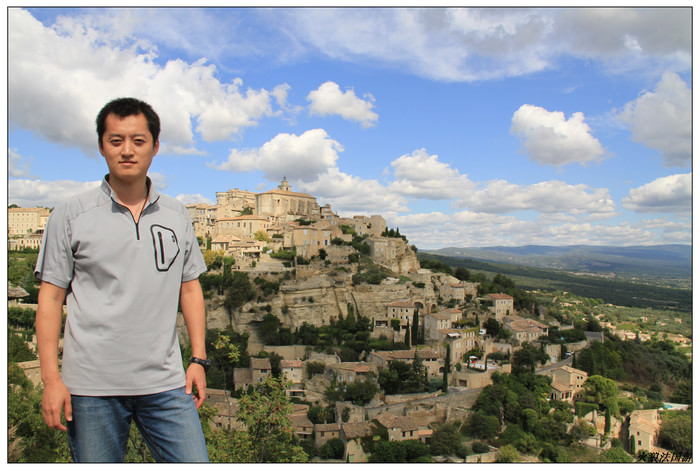monasterio de santa maria de el paular
4A地址: 暂无
开放时间: 暂无

更多热门城市
景点点评
Situated about 90 minutes north of Madrid, the Monasterio is a cultural and artistic gem. The monastery lies about 3km from Rascafría, a small town located in the valley of El Paular, The area is quiet scenic with spectacular mountains all around. Originally founded in the 14th century, the monastery attests to several centuries of evolution and change. While the outside of the monastery seems very plain, once inside you will find some spectacular art. There are guided tours daily, in Spanish, and it is well worth the time. The main chapel has a wonderful late medieval altarpiece made of alabaster and decorated with vivid scenes from the life of Christ. The cloister contains a series of impressive paintings by Carducho illustrating events associated with the Carthusian Order. I found the treasury/chapel/sacristy areas the most impressive. Its Baroque design evidences the richness of this monastery and the artistic heritage it bears. You can stroll around the grounds and enjoy the scenery and serenity of the location. The Sheraton hotel that was once attached to the monastery has closed, but Rascafría has some lodging and good restaurants. It is worth the visit and makes a splendid day-trip from Madrid (or Segovia).
When you think you've seen it, you are escorted behind the lovely ceramic altarpiece to a surprising and very different part of the monastery. I won't spoil the surprise but suggest you make sure to sign up for the guided tour.
The tour is entirely in Spanish; we were very lucky to have someone in the group to interpret into English. The sacristy was the most beautiful one I have ever seen. The outside of the monastery is plain so you don't expect such opulence.
Good relaxing activity if you are not pressured for time. The short drive to Segovia is more interesting if you don't have a lot of time.
It is best to visit on Sunday because that is the only time the church is open and there is a Mass at noon with Gregorian chants, a beautiful experience. King Juan I, King of Castille, laid the first stone in 1390 for the Carthusian monastery. This was the first one in Castille and the sixth in Spain. The construction took many hundreds of years. The monastery life was interrupted during the War of Independence of 1908 against the French. Later monasteries were expropriated in 1835 by the Spanish government. In 1844 the monastery was sold to Rafael Sanchez Merino, who later resold it back to the state in 1864. Franco made a trip to Montserrat in 1942 and enjoyed his stay there. So then he chose the Cartuja de El Paular to have a similar monastery near Madrid. The monastery was at that time abandoned by the Carthusian monks and when Franco offered it back to them, the monks decided not to accept the offer. So Franco gave it to the Benedictine Order from Valvanera, in La Rioja. This order arrived in El Paular in 1954 and have been there ever since.The Benedictine Order was founded by San Benito (480-528). The first few years at the monastery the monks worked very hard to rehabilitate the buildings. The monks earn their living by producing various liquors, such as the Benedictine Liquor. They also produce various types of cheese. They sell these items in their store, adjacent to the entrance. They also work on a trout fish farm and they have a school for boys who are interned in the monastery. The enclosed cloister has 52 large format paintings of the History of the Carthusians. These were originally 56 paintings, done by Vicente Carducho (1576-1638). This was the most complex pictorial cycle commissioned by the Carthusian Order and the order was given in 1626. Vicente Carducho at that time was the most highly regarded artist in the Madrid court. The first 26 paintings illustrated the life of St. Bruno of Cologne, the founder of the Order. The other paintings showed the important events in the life of the Order around Europe. In 1835 when the monastery was expropriated, the paintings went to other places owned by the government. In 2002 the Prado decided to restore all the paintings that had survived and this was completed in 2006. These were then returned to El Paular. The church is the most beautiful part of the monastery. It took final shape during the reign of Isabel la Catolica. There is a railing that separates the monks from the public and this was the work of the monk Francisco de Salamanca. The beautiful choir seats are made of walnut and were made in the 16th century by Bartolome Fernandez of Segovia. The most beautiful part of the church is the main altarpiece, made of polychromed alabaster, created at the end of the 15th century. It was designed by Juan Guas and his school worked on it. The retable has 17 Biblical scenes with much detail. This retable is unique in Spain and is a great work of art. It is hypnotic.
Located about a mile west of town, the monastery was founded in the 14th century and is still inhabited by Benedictine monks. Tours daily at noon, 1 p.m. and 5 p.m., conducted in Spanish only. Show up at main gate and wait in line near store. An architectural jewel, well worth a look inside, showcasing architecture and décor from the 14th through the 18th century. Take a look at the Sheraton hotel next door, part of the original construction, and the nearby stone Puente de Perdon.
El lugar bonito y digno de ver, pero se quitan las ganas de pagar dinero por el trato recibido en el mostrador de vente de las entradas, claramante solo van para recaudar, para poder ver el monasteria tiene que ser bajo las condiciones que ponen ellos, no se puede ivistar por libre, obligatorio ir con guia, y la verdad bastante bordes, nos fuimos sin verlos ya que se nos quitaron las ganas.En resumen, que solo van por la pela.
Enclavado en un paraje privilegiado el Monasterio del Paular atesora entre sus muros una colección única de cuadros de Carducho sobre la vida de San Bruno en su claustro y de arte moderno entre sus muros. La iglesia, capillas, retablos, coro son extraordinarios. De visita obligada
Es espectacular las joyas que custodia este monasterio, sin duda merece la pena hacer la visita para descubrir su interior y así también ayudar a financiar el mantenimiento de las instalaciones.
El claustro, las pinturas de Carducho y todo el Monasterio en sí son dignos de ver. El monje que nos explicó todo durante la visita guiada, muy ameno y con explicaciones muy claras. Verdaderamente valió la pena la visita. Y como los alrededores son tan bien muy bonitos, se puede pasar un perfecto de día de campo después.
Sólo por contemplar el sagrario ya vale la pena la visita. Los diferentes mármoles son espectaculares. La visita es bastante amena y su duración depende mucho del humor del monje que hace de guía, muy simpático aunque habla bastante. Lo recomiendo mucho, aunque no seas fan de monumentos religiosos.
El Monasterio es precioso, yo lo había visitado hace años y la labor de recuperación la he notado, aunque era necesaria, me quedo con mi primera visita
El edificio quedo muy dañado y muchas de sus obras desaparecidas o enviadas fuera del convento pero se ha realizado un gran trabajo de reconstrucción y el resultado es una visita guiada por un fraile donde uno ve todas la grandiosidad. Del claustro y todas las bellezas que allí se encierran así como muchísimas obras de arte.La reconstrucción está expuesta pasó a paso por fotografías e incluso grandes artistas pasaron allí temporadas dejando cuadros y obras de arte inspiradas en el Paular de Rascafria..Muy entretenido de visitar...
Entorno inmejorable, en plena naturaleza y con lugares dignos de un paseo tranquilo. El monasterio es una auténtica joya. Lástima que el hotel está cerrado por renovación.
Es un monasterio muy bonito, con la piedra muy limpia y cuidada.El precio de entrada un poco caro para lo que hay que ver.

